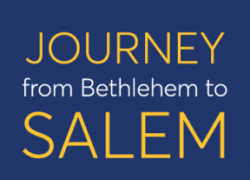October 2 history blog post: One of a series of short essays to provide the cultural, political and geographical context for the 1766 travelers.
When important decisions had to be made, the Moravians would pray about the decision, and then they would place slips of paper with possible solutions into a container. Whichever slip was chosen was determined to be God’s will. Joseph Edmund Hutton, in A History of the Moravian Church, describes one of the earliest uses of the Lot: In 1467 a Synod of Brethren met to determine whether to organize their own ministerial order. They prayed, then they nominated nine men as the possible first pastors. They then took twelve slips of paper and put them in a vase. Nine of the slips were blank, and three were marked “yes.” A young boy then drew out nine slips and handed them to the nine nominated Brethren. The boy could have pulled none of the slips marked yes, or only one or two, but he had pulled all three to determine that Matthias of Kunwald, Thomas of Prelouic, and Elias of Chrenouic would be the first three ministers of the Moravian Church.
The Moravians continued to use the Lot to determine marriage partners, calls to service, and locations for settlements.
In Records of the Moravians in North Carolina. Volume I: 1752-1771, Adelaide Fries notes: “The Brethren of this period believed most firmly that the Lord was willing openly to direct them even in temporal affairs. When their own best judgment had been exercised the final decision was submitted to Him through the ‘lot,’ and results showed that their faith was not put to shame.”
Fries further writes: “…the use of the “lot” was not a haphazard drawing of straws as has been sometimes supposed. Only the Board of Elders was privileged to appeal to the Lord in this way, and all matters of serious import passed through their hands. The method was very simple — the Brethren first worked as near a conclusion as they felt able to go … then the Lord was reverently asked to make the final decision. Two or three “lots” were prepared, the wording varying with the question under discussion, but one was an affirmative, one a negative, and one left the matter open for further consideration. Sometimes only the affirmative and negative were used.”
Virginia S. Hart A’75
Resources:
Joseph Edmund Hutton, A History of the Moravian Church
Adelaide Fries, editor, Records of the Moravians in North Carolina. Volume I: 1752-1771
